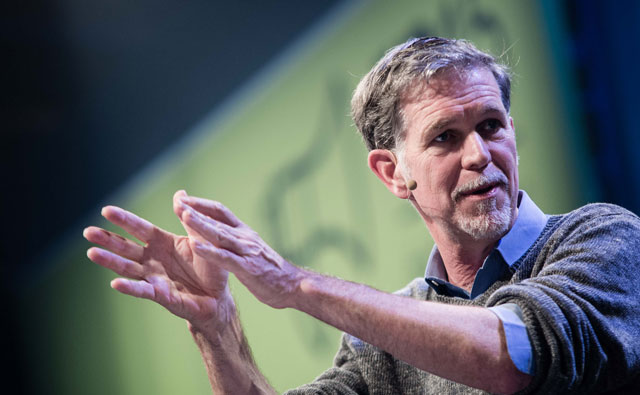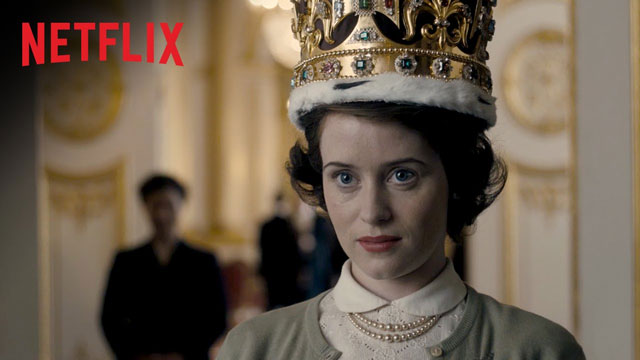
The future of television just got a little clearer.
An hour after America’s Comcast said its Esquire cable network will shut down, a sign of flagging interest in traditional pay TV, Netflix reported its biggest quarter ever, beating analysts’ estimates on new subscribers and validating its vision of a world where everyone watches TV online and on-demand.
Netflix signed up a record 7,05m customers in the fourth quarter of 2016 to cap the biggest year in company history, according to a statement on Wednesday.
The world’s largest paid video service added 19m customers worldwide in 2016 after expanding to more than 190 countries, reaching everywhere but China, North Korea, Syria and Crimea. The shares soared as much as 9,6% to US$146 in extended trading, an all-time high.
The rapid growth of global, online TV services, led by California-based Netflix, is challenging many of the world’s largest media and telecommunications companies to adapt to a new world in which more people spurn the traditional pay-TV subscription and spend less time watching live TV.
“The amount of destruction that’s going to happen within traditional TV creates a virtuous cycle for Netflix,” said Tony Wible, an analyst with Drexel Hamilton who recommends buying the stock.
Netflix CEO Reed Hastings outlined this cycle on a call with analysts after reporting fourth quarter earnings rose to $0,15/share from $0,10 a year ago, beating Wall Street forecasts. Sales grew 36% to $2,5bn.
The more people use Netflix, the more money the company spends on shows, leading to favourable reviews and more users, he said. And after 20 years of operating near break-even, and spending every spare cent developing programming or marketing the service to new subscribers, Netflix finally expects to deliver material profit.
The company forecasts earnings of $165m, or $0,37/share, for the first quarter. That’s almost double analysts’ estimates of $0,19 and would be the company’s biggest profit ever. International markets, long a source of losses, will begin contributing to earnings, too, the company said.
The popularity of the period drama The Crown, about a young Queen Elizabeth II, along with new seasons of Gilmore Girls and Black Mirror helped Netflix lift its total online customer base to almost 94m. Gilmore Girls, a reboot of a show that aired on TV from 2000 to 2007, was one of the 10 most popular shows in every market, Netflix said.

The company also released its first original Brazilian series, 3%. How many people watch any given Netflix show remains a mystery since the company doesn’t offer concrete data. However, it does call out particular successes, like a new season of the sci-fi show Black Mirror. Netflix programmes accounted for five of the 10 most-searched TV shows of 2016, based on Google trend data, the company said.
New titles
Netflix will release 42 titles through the end of the quarter, spanning dramas, comedies, documentaries, movies, kids’ shows and stand-up comedy, officials said on the call.
This week, Netflix signed a deal with Jerry Seinfeld, and plans to develop, produce and own more of its shows rather than depend on other TV studios.
Netflix is also increasing the output of international productions that have been vital to the service’s growth outside the US. Such local productions “create a lot of great excitement for Netflix in the market”, Ted Sarandos, the company’s chief content officer, said on the call. “It’s a really elevated form of TV relative to what’s available.”
Netflix’s spending has prompted peers to warn that too many shows are being made and that the company’s spending is unsustainable. The TV industry produced an all-time high 450-plus scripted shows in 2016, according to data from cable network FX. This trend can’t go on because most shows are unprofitable and many networks are losing viewers, John Landgraf, FX’s CEO, has said.
The Esquire Network, owned by Comcast and Hearst, fell prey to those economics on Wednesday, one of many pay-TV channels potentially on the chopping block as consumers “cut the cord” (cancel pay-TV subscriptions). Dropped weeks ago by AT&T, the male-focused channel lost 15m households and will become an online only network later this year.
Netflix argues this is the precise time to make more shows. Alluring programmes are vital to convincing more people to defect from existing TV networks and services.
The company predicts it will sign 3,7m new international customers in the quarter, compared with analysts’ projections of 3,5m. In the US, the company expects to add 1,5m new domestic streaming customers, compared with estimates of 1,7m.
Netflix will spend $6bn on programming in 2017, part of its longer-term budget of $14,5bn. The company forecasts negative free cash flow of $2bn in 2017, wider than the year just ended, and said it will continue to borrow as needed.
Sceptics fretting about costs are missing the bigger picture, Wible said.
“The losses Netflix generates are its biggest competitive advantage,” analyst Wible said. “They make it incredibly difficult to compete.” — (c) 2017 NewsCentral Media

